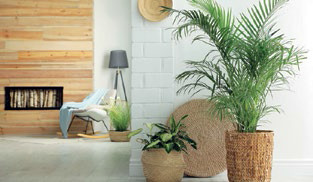Create a snooze-friendly bedroom with a few simple swaps


One of the easiest ways to be healthy is to sleep well. According to a 2016 study by SingHealth Polyclinics, 44 per cent of Singaporeans sleep less than seven hours on weekdays, and 26 per cent don’t sleep enough on weekends. Furthermore, an online poll across 12 countries by American market research firm Wakefield Research in 2018 found that Singaporeans were the second most sleep-deprived people in the world.
Lack of sleep could profoundly impact our body as sleep is one of the key contributors to good health. One easy way to help you sleep better is to change your bedroom interiors. Studies have shown that the decor and design of your bedrooms can affect the quality of your slumber.
Look at lighting
Light has a significant effect on how you fall asleep and wake up. It affects your 24-hour body rhythm and is nature’s way of stimulating the sleep hormone melatonin. In a research reported in the Scientific Reports journal, Luc Schlangen, principal scientist and Signify (Philips Lighting) research expert, says this natural sleep-wake cycle can be disrupted due to an excessive exposure to artificial light in the late-evening and at night. That throws our body clocks out of sync. According to a 2016 research in Endocrine Reviews, disrupted sleep can harm your metabolic health.
TRY: A wide range of lighting options in your bedroom. This would allow you to reduce or dim lights when evening comes, and gradually increase the brightness of the lights in your room to help you wake up in the morning.
A device-free zone
There has been an increasing number of studies about keeping mobile phones out of the bedroom. In 2008, the Karolinska Institute in Sweden confirmed that radiation from a mobile phone can affect the amount of time it takes to reach deep sleep. Ongoing research from neuroscientist George Brainard at Thomas Jefferson University suggests that blue light emitted from mobile phones suppresses melatonin.
TRY: Use an old-fashioned alarm clock instead of your mobile phone. If you need your mobile in the bedroom for emergency phone calls, have it as far away from the bed as possible and keep it face down.
Update your bedding
We spend almost a third of our lives sleeping, yet most of us don’t pay much attention to our beds. A recent research by the University of Sydney found that wool fibres absorb moisture better than polyester, helping us keep the right temperature.
Dr Andrew Rochford of Koala Mattresses says that the correct temperature makes sleeping more comfortable. “Somewhere between 18 to 20 C is optimum, and that will save you from tossing and turning with your leg hanging out of the bed trying to get cool and comfy.”
TRY: Use a woollen quilt to help regulate your temperature, and also investing in a new, good-quality mattress every eight years.
Use natural oils
Lavender and clary sage essential oils have a relaxing effect on our minds and senses. Most essential oils are safe for children, but always check with a doctor before using them. Those who are breastfeeding, or are pregnant should exercise caution when using essential oils too.
TRY: Use a lavender linen or pillow spray. You can also add a few drops of lavender oil to an aroma diffuser before bedtime to promote relaxation.
Rethink your decor
You may love the colour purple, but did you know it could affect your sleep patterns? While colour therapy isn’t usually a design consideration, studies have proven it can aid a good night’s sleep. Colours can elicit different emotions and choosing the right colours can make us feel calmer and more relaxed. A British study by hotel chain Travelodge found that people who use purple tones to decorate their bedrooms only had an average of five hours and 56 minutes of sleep a night, while those who used blue hues reported having the most sleep, at seven hours and 52 minutes.
TRY: Go for blues and greens, and avoid red, gold and purples.
Clear clutter
A mess-free bedroom is often at the end of our very long to-do lists. According to a study in SLEEP, the Sleep Research Society journal, clutter and hoarding can affect your ability to switch off and calm your mind before bedtime, impacting on the overall quality of your sleep.
INSTANT HOME C ALMERS

Spritz with Pine

Accent with Plants

Choose Sustainability
TEXT: BAUERSYNDICATION.COM.AU / PHOTOS: 123RF.COM























